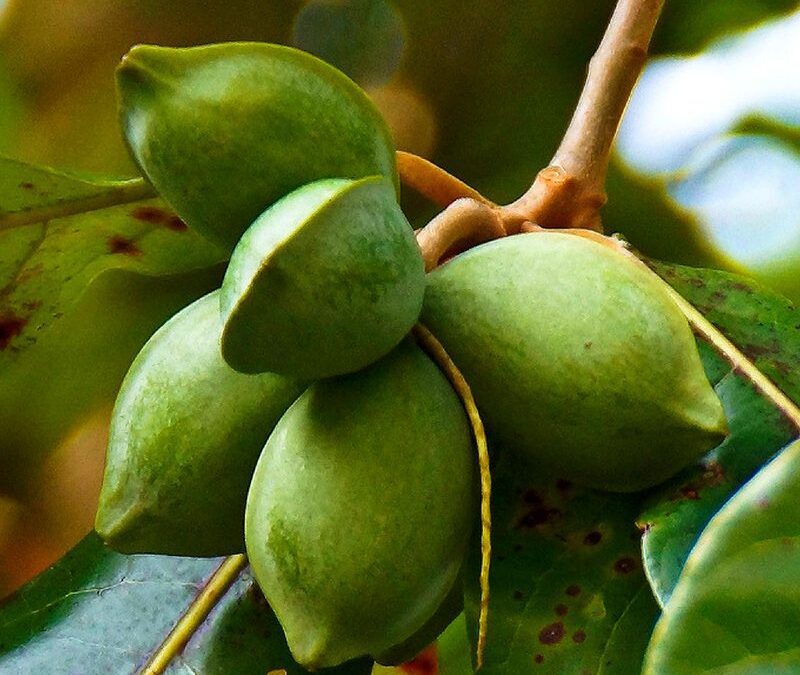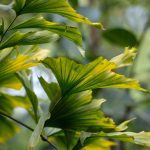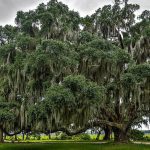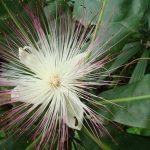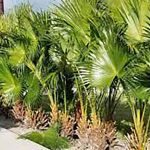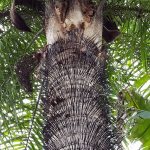
Your Title Goes Here
Terminalia catappa is a large tropical tree in the leadwood tree family, Combretaceae, native to Asia, Australia, the Pacific, Madagascar and Seychelles.[1] Common names in English include country almond, Indian almond, Malabar almond, sea almond, tropical almond,[3] beach almond[4] and false kamani.[5]
The tree grows to 35 metres (115 feet) tall, with an upright, symmetrical crown and horizontal branches. The fruit are corky and light, and dispersed by water. As the tree gets older, its crown becomes more flattened to form a spreading, vase shape. Its branches are distinctively arranged in tiers. The leaves are large, 15–25 cm (6–9+3⁄4 in) long and 10–14 cm (4–5+1⁄2 in) broad, ovoid, glossy dark green, and leathery. They are dry-season deciduous; before falling, they turn pinkish-reddish or yellow-brown, due to pigments such as violaxanthin, lutein, and zeaxanthin.
The trees are monoecious, with distinct male and female flowers on the same tree. Both are 1 cm (3⁄8 in) in diameter, white to greenish, inconspicuous with no petals; they are produced on axillary or terminal spikes. The fruit is a drupe 5–7 cm (2–2+3⁄4 in) long and 3–5.5 cm (1+1⁄8–2+1⁄8 in) broad, green at first, then yellow and finally red when ripe, containing a single seed. Pollen grains measure about 30 microns.
The species epithet is based on its Malay name Ketapang.[6][7]

